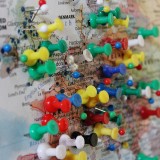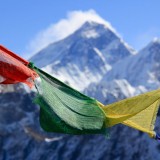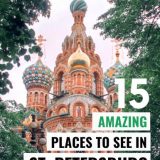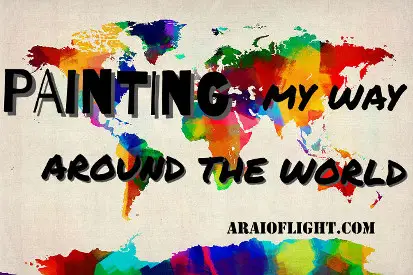CHEERS in Different Languages → 100 Ways! From Around the World
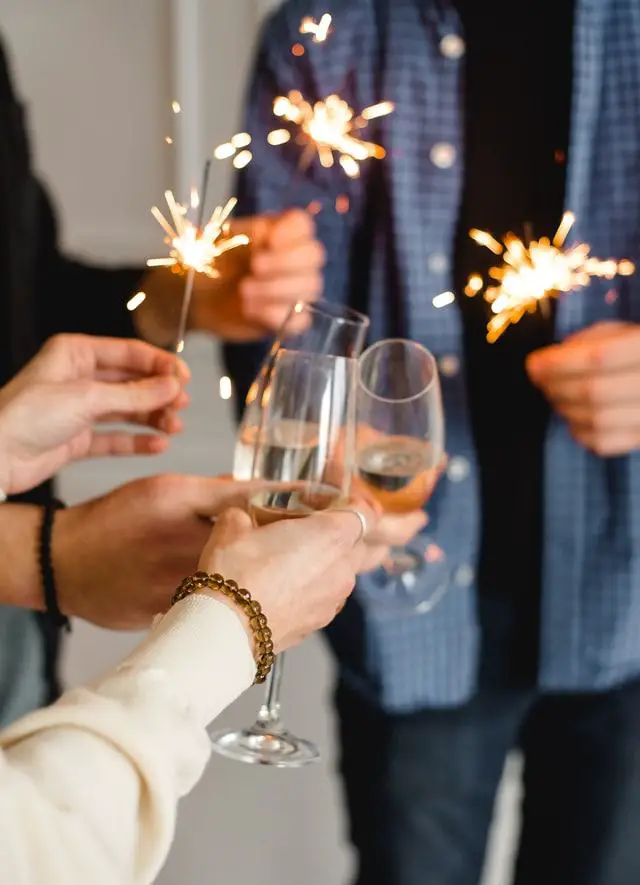
CHEERS! To good health and a long and happy life. Across the globe, this simple word is used, along with the raising and clinking of glasses, as an expression of benignancy, fellowship, camaraderie and benevolence. This effortless declaration is a way of celebrating friendship, good health, and happiness to those that partake in the tradition. Share the good vibes around the globe and continue reading to learn how to say cheers in different languages around the world. Here’s to you and to your life… Bottom’s up!
The custom of toasting has spread far and wide around the world. The words may be different, but the good intentions and ceremonial cheer are one and the same, no matter which country you may find yourself in. You can learn a lot about a region and its inhabitants from the way the locals express themselves and an advantage of traveling is this insight gained.
It’s always a good idea to know a few words in the language of the country you’re exploring. Start conversations, impress the locals, and make a new best friend by learning these other words too:
Did you know:
Where does the term CHEERS come from?
It is customary to raise one’s glass together with others along-with saying cheers before drinking to health and in honor of something or someone. This is traditionally done at the end of a toast.
However, have you ever wondered where does this tradition hail from? Why is called a “toast” and why do we say “cheers?”
The Origins and Customs of Toasting Drinks
Well, this ritual has been going on for so long that its origins are a bit hazy. During feasts, ceremonies, and celebrations, ancient civilizations used it as a way to honor their gods. The ancient Romans and Greeks offered a sacred liquid during which the god of wine, Bacchus, was honored.
The phrase “to toast” originates from the literal action of adding a piece of toasted bread to your drink. The quality of the wine was so poor that in the 16/17th century it was common practice to add a bit of spiced toast to the wine. The piece of toast would balance the acidity of the drink and drastically improve its flavor profile.
A toast was originally only offered to women, from the assembled men who raised their glasses to ‘the toast of the town.’ By the 18th century the term morphed into that of a person being honoured by the toast, rather than the piece of bread.
The term cheers comes from chiere, the old French word, meaning face or head. By the late 17th century it was used as a form of encouragement and shortened from of the phrase, ‘have good cheer.’ Today, it is a symbolic act of wishing good health and good times to those around you.
Why do we say cheers and clink glasses?
This ritual that has transcended time has its origins in the following:
— To chase away evil spirits and demons
This stems from the medieval times when glasses were banged on the table or clinked, followed by loud cheering so as to ward off any bad spirits in the room.
— A form of poison control
When glasses that are filled to the brim are clinked, a bit of alcohol from each glass would spill into the other glass, proving that neither was poisoned. This mixing of drinks would prevent anyone from attempting to tamper with the drink.
— To elevate the senses
Aside from sound, all the other senses are involved when drinking. You can taste it, touch it, smell it, and of course see it. So the clinking of glasses was a way to involve hearing into the drinking experience.
— A glass is lifted to the heavens
This upward action of raising our glasses is as if an offering is made to the gods and a declaration of health for the living.
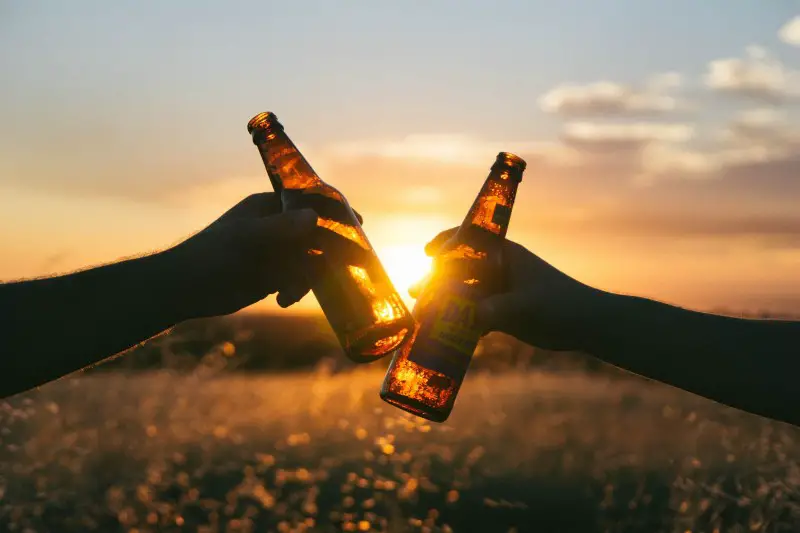
Continue reading to discover the complete list of cheers in every language.
Copy and paste, save to your phone, or print out and stick it in your passport. I’ll be continually updating this as I discover even more ways of saying cheers in other languages.
Be sure to bookmark this post so that it’ll always be on hand for when the moment strikes. Salud!
If you wanted to say cheers to every person in the world, you would need to learn those individual words from over 7,000 languages.
Fortunately, just by reading this guide I have put together for you, you will be able to say cheers in another language to more than 90% of the people in the world. So whether you find yourself in Africa, Europe, Asia, or America, I’ve got you covered with this happy birthday in different languages list, fellow traveller.
So raise your glass with new found friends and drink to this. Cheers!
10 Other Creative Ways to Say Cheers
In addition to saying the word cheers in other languages, here are a couple other words you could use during a toast.
- Bottoms up
- Down the hatch
- Salud
- Good luck
- Here’s to you (us)
- Good Health
- Skol
- Mate
- Prosit
- Chin-chin
Toasting Around the World
CHEERS IN DIFFERENT LANGUAGES
Humans have been eating exotic foods and raising their glasses in ceremonial cheers through all of time.
So raise a glass of your own and let’s cheer to good health, success, and happiness.
Here’s your ultimate guide on how to say cheers in a different language.
Over 100 ways for cheers in all languages to toast your new found friendship in the most spoken languages of the world.
With pronunciation. In brackets you will find how to pronounce the word as it can often be difficult to know how to vocalise the word just by reading or looking at the direct translation.
Are you ready to take a trip around the world and learn how to convey good health?
I have included cheers in every language I could think of. If you don’t spot your language, let me know (in the comments) and I will be happy to add it to this list.
Scroll to the bottom for a little bonus! ↓↓
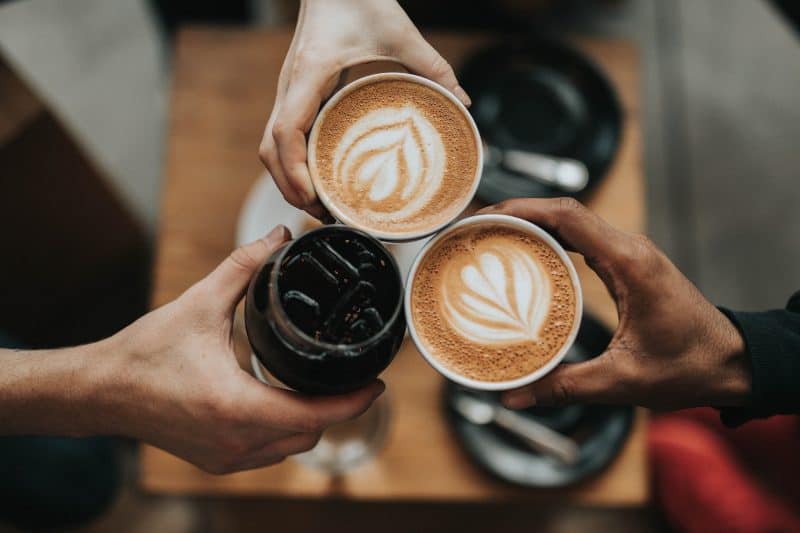
Speaking of love, describe your great love for wanderlust with these:
50 creative words about travel
How do I say CHEERS in another language? Cheers in 100 different languages!
Let’s get into it…
Here’s how you say “cheers” in:
Afrikaans
- Gesondheid
— is the Afrikaans word for cheers
pronounced (ge-sund-hate)
Afrikaans is a West Germanic language of Southern Africa mostly derived from Dutch. It developed as Dutch settlers and indigenous African mixed languages beginning in the 17th century. Today, an estimated 15 to 23 million people call Afrikaans their mother tongue. It is mainly spoken in South Africa and Namibia and can also be heard in parts of Botswana and Zimbabwe.
Albanian
- Gëzuar
— is the Albanian word for cheers
pronounced (geh-zoo-ah) - Shëndeti tuaj
Albanian is an Indo-European language, spoken mainly in Albania and Kosovo, though it is also spoken in other areas of the Balkans. With about 7.5 million speakers, it comprises an independent branch within the Indo-European languages and is not closely related to any other language in Europe.
Alsatian
- G’sundheit
— is the Alsatian word for cheers
Alsatian is a West Germanic language spoken by around 900,000 people, mainly in the Alsace region of northeastern France.
Amharic
- ለጤናችን Letenachin
— (L’-TAY-nah-chin) is the Amharic word for cheers - ለጓደኛነታችን (Lägwadäňňannätaččən)
— can also be used
Amharic is a Semitic language and the official language of Ethiopia. It can also be heard in Egypt and Eritrea, as well as in Israel, Sweden, Canada and the United States.
Arabic
- في صحتك Fi sihtik
— This is the general word for cheers in Arabic, translating as good luck, and pronounced (Fe sahe-tek) - في صحتكم fee saḥitkum
— cheers to good health in Arabic
- بالعافية bil-‘áfya
— may you eat with health
Arabic (العربية) is a Semitic language spoken by over 420 million people as their first language in areas including North Africa, the Arabian Peninsula, and other parts of the Middle East. Many more people can also understand it as a second language. Modern Standard Arabic is the liturgical language for 1.6 billion Muslims and is the official written form of the language with the Arabic alphabet, which is written from right to left.
Armenian
- Կենացդ Genatset
— cheers in Armenian, pronounced (gen-ots-nute) - Առողջութիւն: (arroghchootyoon)
Armenian is an Indo-European language spoken in the Republic of Armenia, as well as in large communities of Armenian diaspora by around 6.7 million people.
Assamese
- গুদলাক gudalaaka
Assamese is an Indo-Aryan language spoken in the northeast Indian state of Assam, where it is an official language. Native to India and Bangladesh, it is spoken by over 23 million people.
Azerbaijani
- Nuş olsun
— means cheers in Azerbaijani
pronounced (Nush ohlsun) - i Afiyët oslun
— (Afeeyet Ohs-lun) - Sənin sizin sağlığınıza
Azerbaijani or Azeri is the primary and official language of Azerbaijan by its 8.8 million native speakers. It is also widely spoken in Northern Iran and to a small extent in southern Dagestan, the Kvemo Kartli region of Georgia, eastern Turkey, in Shia cities of Iraq, like Karbala and Kirkuk. The language is a Turkic language and is highly intelligible with modern-day Turkish.
Basque
- On egin
— is the Basque word that translates as cheers, (On egín) - Topa
— Toe-pah - Eskerriska
Basque (euskara) is a language spoken in the Basque Country (Gipuzkoa, Araba, Bizkaia) and Navarra (in Spain) as well as in the French Basque Country (Labourd, Soule and Basse-Navarre). Linguistically, Basque is a language isolate and is unrelated to the other languages of Europe.
Bavarian / Austrian German
- to say cheers in Bavarian use: Brosd
Bavarian is a regional dialect of German spoken in the German state of Bavaria, western Austria, and Northeastern Italy by over 14 million people. It uses German grammar, but takes several root words from Latin.
Belarusian
- За здароў’е (Za zdaroū’e)
— is the Belarusina word for cheers
Belarusian is the official language of Belarus. This East Slavic language is also spoken in Russia, Ukraine and Poland.
Bengali
- The Bengali noun for cheers is জয় (jôy)
Bengali বাংলা is the only official language of Bangladesh, one of the 22 official languages of India, and the sixth most spoken language in the world. It is spoken as a first language by the majority of the population in Bangladesh, as well as people in the Indian state of West Bengal.
Bhojpuri
- बढ़िया सेहत के वास्ते badhiya sehat ke vaaste
Bhojpuri is an Indo-Aryan language, considered to be one of the most rapidly growing languages in the world, spoken in northern-eastern India and the Terai region of Nepal.
Bosnian
- Živjeli
— is the Bosnian word for cheers, pronounced (zhee-vi-lee) - Na zdravlje
Bosnian, a south Slavic language of the Indo-European family, is the official language of Bosnia and is essentially the same language as Croatian and Serbian. All three languages used to be known as Serbo-Croatian before the break-up of Yugoslavia.
Brazilian Portuguese
- Viva
—is the word for cheers in Brazilian Portuguese, pronounced (vee-va) - Saúde
- Tim-Tim
Brazilian Portuguese (Português do Brasil) is the variety of Portuguese dialect spoken in Brazil. It is spoken by virtually all of the 200 million inhabitants of Brazil and spoken widely across the Brazilian diaspora. European Portuguese differs from the Brazilian variety in pronunciation, as well as in some vocabulary.
Breton
- Yec’hed mat
— is the word for cheers in Breton
Breton is a Southwestern Brittonic language of the Celtic language spoken in Brittany in the northwest of France.
Bulgarian
- Наздраве
— pronounced (NAZ-dra-vey) is the Bulgarian word for cheers
Bulgarian is a South Slavic language spoken in Southeastern Europe, primarily in Bulgaria. It is the country’s only official language and Bulgarian is written with Cyrillic.
Burmese
- Aung myin par say
— pronounced (au-ng my-in par say) is the Burmese word for cheers
Burmese is a Sino-Tibetan language spoken in Myanmar where it is an official language and the language of the Bamar people, the country’s principal ethnic group.
Cambodian Khmer
- ជល់មួយ (jul mouy)
— means cheers in Khmer - លើកដាច់ (leuk dach)
Khmer is the language of the Khmer people and the official language of Cambodia. With over 16 million speakers, it is the second most widely spoken Austroasiatic language.
Catalan
- Salut
— pronounced (sah-lut) is the Catalan word for cheers - Txin txin
Catalan is a Western Romance language derived from Vulgar Latin and named after the medieval Principality of Catalonia, in northeastern of modern Spain. It is the only official language of Andorra, and a co-official language of the Spanish autonomous communities of Catalonia, the Balearic Islands and Valencia.
Cebuano
- Mabuhi
Cebuano, also known as Bisaya or Binisaya, is an Austronesian language spoken in the southern Philippines region in Central Visayas, western parts of Eastern Visayas and the majority of Mindanao.
Chamorro
- Biba
— pronounced (Bih-bah) is the Chamorro word for cheers - Hago lao
Chamorro is an Austronesian language, the native and spoken language of the Chamorro people, who are the indigenous people of the Mariana Islands.
Chichewa
- okondwa
Chichewa, also known as Nyanja, is a Bantu language spoken in much of Southern, Southeast and East Africa. It is the national language of Malawi and is also spoken in Zambia, Mozambique and Zimbabwe.
Chinese Cantonese
How to say cheers in Chinese Cantonese:
- 飲杯 Gon bui
— the Chinese word for cheers
pronounced (Gon bui) - 飲勝 Yám sing
- 飲杯 Yám bùi
Cantonese is a variety of Chinese originating from the city of Guangzhou and its surrounding area in Southeastern China. Belonging to the Sino-Tibetan family of languages, it is the traditional prestige variety of the Yue Chinese dialect group, which has about 68 million native speakers.
Chinese Mandarin
How do you say cheers in Chinese Mandarin:
- 干杯 (gān bēi)
— the Chinese word for cheers, meaning dry glass.
pronounced (Gan bay)
Mandarin Chinese is the official language of Mainland China and Taiwan, and is one of the official languages of Singapore. Mandarin is often placed first in lists of languages by number of native speakers with almost a billion speakers.
Corsican
- Cheers in Corsican: À salute
Corsican is a Romance language from the Italo-Dalmatian family that is spoken predominantly on the Mediterranean island of Corsica. Corsican is closely related to Tuscan and to the Florentine-based Italian.
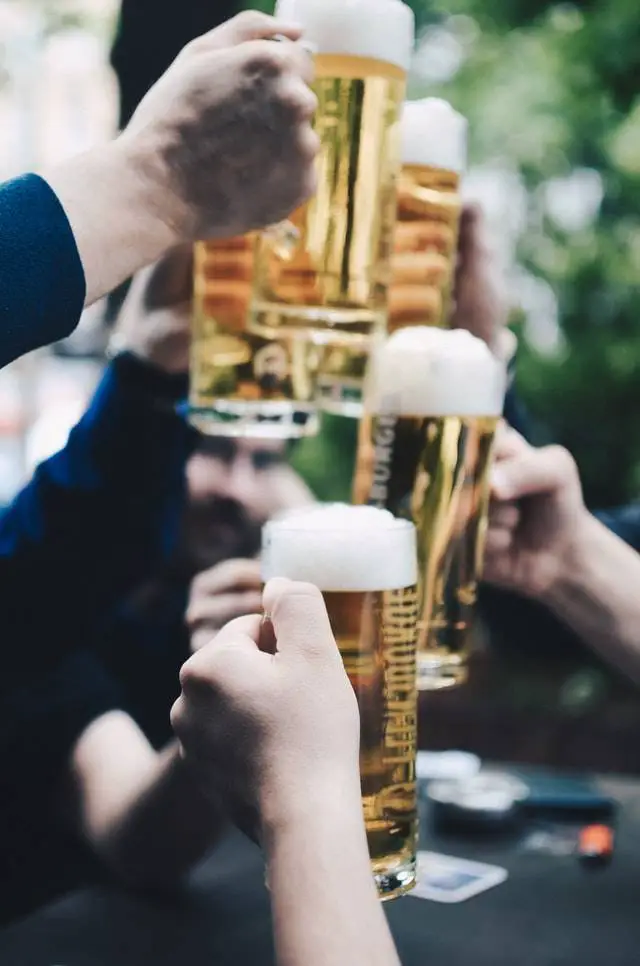
Croatian
- Živjeli
— is the Croatian word for cheers, pronounced as (zhee-ve-lee)
Meaning: let’s live - Nazdravlje
— (Naz-dra-vlee) can also be used
Croatian or Hrvatski is a South Slavic language spoken mainly in Croatia, Bosnia and Herzegovina, some parts of Serbia, and the neighbouring countries by about 5.5 million people.
Czech
- Na zdravi
— Cheers in Czech (Naz-drah vi)
Czech is a Western Slavic language which is mutually intelligible with Slovak. It is mainly spoken in the Czech Republic with over 10,5 million speakers.
Danish
- Skål
— is the word for cheers in Danish, pronounced (Skoal)
Danish is a Scandinavian language and the only official language of the Kingdom of Denmark. Closely related to Swedish and Norwegian, it is spoken in Denmark and in some parts of Greenland and northern Germany.
Dogri
- wah wah
Dogri is a Northern Indo-Aryan language spoken by around five million people in India, mainly in the Jammu region of Jammu and Kashmir.
Dutch
- Proost
— the Dutch word meaning cheers, pronounced (Prohst) - Op je gezondheid
Dutch is a West Germanic language spoken by about 27 million people world-wide mostly in the Netherlands and northern Belgium.
Dzongkha
- Tashi Delek
— as a toast to good luck
Dzonkha or Bhutanese is the sole official and national language of the Kingdom of Bhutan. This Sino-Tibetan language is spoken by over half a million people in Bhutan and is written with the Tibetan alphabet.
English
- Cheers
Other words for cheers in English:
- Good health
- Bottoms up
- Down the hatch
- Here’s mud in your eye
English is a West Germanic language that was first spoken in Anglo-Saxon England in the early Middle Ages. It is spoken in many countries around the world with over 375 million native speakers. English is the second most spoken language, and the most international language in the world.
Estonian
- Terviseks
— is the Estonian word for cheers
pronounced (Ter-vih-seks)
Estonian is a Finno-Ugric language spoken as the official language in Estonia. It is closely related to Finnish.
Faroese
- Skál
— is the word for cheers in Faroese, pronounced (skoll)
Faroese is a North Germanic language spoken as a first language by Faroe Islanders, residing on the Faroe Islands and in other areas, mainly Denmark.
Farsi / Persian
- به سلامتي (beh salamati)
— the Persian word meaning cheers, meaning to your good health - سلامتي (sal-a-ma-TEE)
Persian is an ancient language belonging to the Iranian branch of the Indo-Iranian subdivision of the Indo-European languages. It is a pluricentric language predominantly spoken and used officially within Iran, Afghanistan, and Tajikistan.
Fijian
- Bula
— this is the Fijian word for cheers
Fijian is an Austronesian language of the Malayo-Polynesian family. It is an official language of Fiji spoken by some 350,000–450,000 ethnic Fijians as a native language.
Finnish
- Kippis
— is the Finnish word for cheers, pronounced (Keep-iss) - Terveydeksi
— meaning to your health - Pohjanmaan kautta
Finnish is a Finno-Ugric language spoken only in Finland as the official language and by ethnic Finns elsewhere in Scandinavia.
Flemish
- Santé
— is the Flemish word for cheers
Flemish is a Low Franconian dialect cluster of the Dutch language, native to the historical region of Flanders in northern Belgium. It is sometimes referred to as Flemish Dutch, Belgian Dutch, or Southern Dutch spoken by over 6 million people.
French
- Santé
is the French word for cheers, meaning health
— it’s pronounced like (Sahn-tay) - À la votre santé
(Ah la vo-tre sahn-tay) is used as a toast to good health - À la tienne
French is a Romance language of the Indo-European family spoken by over 354 million people in France and around the world. It is the third most spoken language in Europe, the official language of 29 countries, spoken in parts of Africa, North America, and South America.
Frisian
- Tsjoch
- Sünhäid
The Frisian languages are a closely related group of Germanic languages, spoken by about 500,000 Frisian people, who live on the southern fringes of the North Sea in the Netherlands and Germany.
Galician
- Salud or Saúde
— (Sa-lood)
Galician is a Romance language spoken by around 2.4 million people in Galicia, a region in northwestern Spain, where it is the official language.
Georgian
- გაგიმარჯოს
Gag-ee-moch-oss - ჯანმრთელობას გისურვებ (janmrtelobas gisurveb)
Georgian is the official language of Georgia and the country’s most widely spoken language with over 4.1 million people.
German
- Prost
— the German word that translates to cheers
It’s pronounced as (Prohst) - Prosit
- Zum wohl
— is also used, pronounced (Tsum vohl) - Auf uns
German Deutsch is the official language of both Germany and Austria and one of the three official languages of Switzerland. German belongs to the West Germanic group of the Indo-European language family. One of the major languages of the world, German is a native language to almost 100 million people worldwide and the most widely spoken native language in the European Union.
Greek
How to say cheers in Greek:
- στην υγειά σας
— Stin Eyiassou pronounced (Stin Eye-ee-yass-ooh) - ΥΓΕΙΑ
— pronounced (ya-mas), meaning to your health. - Είς υγείαν (Is iyían)
Greek (ελληνικά) belongs to the Hellenic branch of the Indo-European language family, mainly spoken in Greece and Cyprus an an official language. It has the longest documented history of any living Indo-European language, spanning more than 3000 years of written records. There are about 13.1 million speakers of Greek worldwide and it is recognised as a minority language in Albania, Armenia, Hungary, Italy, Romania, Turkey and Ukraine.
Greenlandic
- Kasuutta
— is the Greenlandic word for cheers
Greenlandic falls under the Eskimo–Aleut language family, spoken by around 57,000 Greenlandic Inuit people in Greenland.
Gujarati
- ચીઅર્સ Cī’arsa
— is the Gujarati word for cheers
Gujarati is an Indo-Aryan language native to the Indian state of Gujarat and spoken predominantly by the Gujarati people. Gujarati is part of the greater Indo-European language family.
Haitian Creole
Say cheers in Creole:
- Ochan
- Sante
Haitian Creole (kreyòl ayisyen)) is a French-based creole language spoken by 10–12 million people worldwide and the only language of most Haitians. Along with French it is one of the official languages of Haiti.
Hausa
- murna
Hausa language, the most important indigenous bridge language in West and Central Africa, spoken as a first or second language by about 40–50 million people. It belongs to the Western branch of the Chadic language family within the Afro-Asiatic language phylum. It is spoken mainly in northern Nigeria and Niger, and also in Benin, Burkina Faso, Cameroon, the Central African Republic (CAR), Chad, Congo, Eritrea, Germany, Ghana, Sudan and Togo.
Hawaiian
How to say cheers in Hawaiian:
- Kāmau
— pronounced as (Ka-Mau) - ʻŌ’kålè ma’luna
— pronounced (okole maluna) - Hipa! Hipa! or Huli pau
— can also be used casually
The Hawaiian language is a Polynesian language that takes its name from Hawaiʻi, the largest island in the tropical North Pacific archipelago where it developed. Hawaiian, along with English, is an official language of the State of Hawaii.
Hebrew
- לחיים (L’chaim)
— is the Hebrew word for cheers, meaning to life, pronounced (leh HAI-em)
Hebrew is a Northwest Semitic language spoken by over nine million people worldwide. Historically, it is regarded as the language of the Israelites and their ancestors. It is written using its own script from right to left.
Hindi
- अच्छी सेहत के लिए
— (A-chees-sa-hip-ka-leer) is the Hindi word for cheers
Hindi (हिन्दी) is an Indo-European language spoken in India, Nepal, and throughout the Indian diaspora. Hindi is descended from Sanskrit, sometimes called “the mother of all languages.” While there are 22 official languages and over 1,000 dialects of India, Hindi and English take precedence in government affairs. It is a link-language for over half of India’s population.
Hmong
- Zoo siab
Hmong is a Hmong-Mien language spoken by about 2.6 million people in China, Vietnam, Laos, Thailand, USA, and French Guiana.
Hungarian
- Egészségedre
— this is the word for cheers in Hungarian.
You say it as (egg-esh ay-ged-reh) - Fenékig
— meaning until the bottom of the glass and pronounced (fehn-eh-keg) - Kedves
Hungarian is a Uralic language of the Ugric branch spoken in Hungary and parts of several neighbouring countries. It is the official language of Hungary and one of the 24 official languages of the European Union.
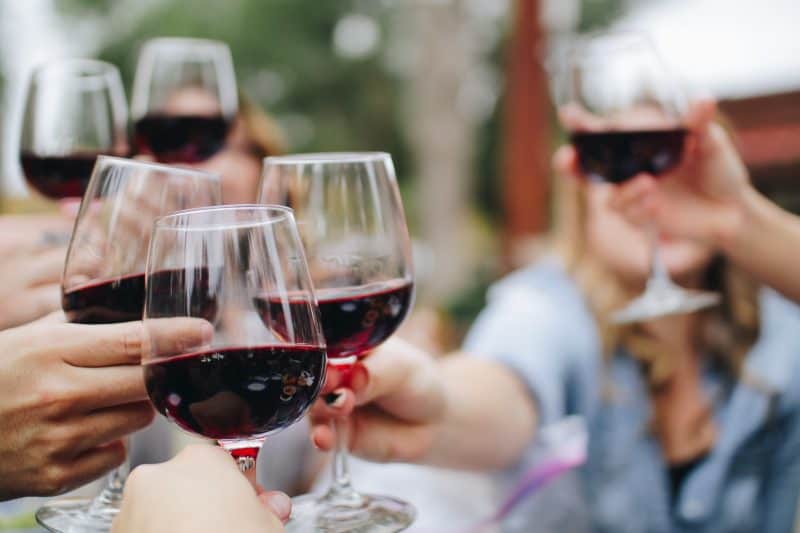
Icelandic
- Skál
— is the Icelandic word for cheers, pronounced (sk-owl)
Icelandic (íslenska) is a North Germanic language spoken in Iceland as its official language. It’s most closely related to Faroese and Western Norwegian and has around 314,000 speakers. The language is more conservative than most other Western European languages.
Igbo
- Mma manu
Igbo is the principal native language of the Igbo people of southeastern Nigeria with around 45 million speakers and over 20 dialects.
Indonesian Bahasa
- Pro
— the Indonesian noun and verb for cheers, pronounced like (prho) - Santi
- Bersulang
Indonesian (bahasa Indonesia) is the official language of Indonesia.With over 230 million speakers, it is one of the most widely spoken languages in the world. It is a group of varieties of Malay, an Austronesian language that has been used as the common language in the multilingual Indonesian archipelago for centuries. Indonesia uses the Latin alphabet system and Arabic numerals.
Inuktitut
- ᐃᓅᓯᖃᑦᓯᐊᖅ (Inuuhiqatsiaq/Inuusiqatsiaq)
— is the word for cheers in Inuktitut
Inuktitut is an Eskimo-Aleut language spoken in Arctic territories and the topmost span of North America including Alaska and Northern Canada.
Irish
- Sláinte
— This is how you say cheers in Irish Gaelic as a toast to health, pronounced (slawn-cha) - Sláinte mhaith
- Sláinte agus táinte
— a toast to health and wealth - Fad saol agat, gob fliuch, agus bás in Éirinn!
— can also be used
Irish (Gaeilge) is one of the three Goidelic languages, along with Scottish Gaelic and Manx. This Goidelic branch together with the Brythonic branch (Welsh, Cornish and Breton) form the Celtic language family.
Italian
How to say cheers in Italian:
- Salute
— is the Italian noun for cheers, and it’s pronounced as (Saw-lut-ay) - Cin Cin
— pronounced (chin chin)
Italian (Italiano) is a Romance language of the Indo-European language family spoken by over 90 million people, the vast majority of which are in Italy, Sicily and Sardinia. It is the official language of Italy, San Marino, and the Vatican City.
Japanese
A number of different words in Japanese to express the idea of cheers include:
- 乾杯 (Kanpai)
— translates as dry the glass
It’s pronounced (Kan-pie)
Japanese (日本語 Nihongo) is an East Asian language of the Japonic language family. It is spoken by about 125 million people, mostly in Japan, where it is the official and national language.
Jamaican
- Cheers
Jamaican Patois, often also referred to as Jamaican Creole, is an English-based creole language with West African influences spoken mainly in Jamaica. Belonging to the English Creole language family, it is spoken by the the majority of Jamaicans with over 3 million native speakers.
Javanese
- Mari bersulang
- Surak surak
— is the word for cheers in Javanese
Javanese is the language of the Javanese people of the island of Java, in Indonesia that is the native language of more than 98 million people.
Kannada
- ತುಂಬಾ ಸಂತೋಷ
— is the Kannada word for cheers, (tumba santosha) - ಖುಷಿಯಾಯ್ತು khushiyāytu
— which also means good luck
Kannada, spoken by nearly 45 million native speakers, is a Dravidian language of the people of Karnataka in southwestern India, and by significant linguistic minorities in the states of Maharashtra, Andhra Pradesh, Tamil Nadu, Telangana, Kerala and abroad.
Kazakh
- Денсаулығыңыз үшін
— Densawlığıñız üşin - Саулығыңыз үшін (Sawlığıñız üşin
Kazakh is a Turkic language of the Kipchak branch spoken in Central Asia and the official language of Kazakhstan. The language comprises 21 million native speakers including regions of Bayan-Ulgii in Mongolia and the Dzungarian region of Xinjiang, China.
Korean
Cheers in Korean:
- 건배 Geonbae
— pronounced (gun bae), meaning dry glass. - 위하여 (wihayeo)
Korean, an East Asian language, is the official language of South Korea (Republic of Korea) and North Korea (Democratic People’s Republic of Korea) spoken by more than 75 million people.
Kurdish
- Noş
- Noshî can be
Kurdish is spoken by about 30 million Kurds in western Asia including parts of Kurdistan, Iraq, Turkey, Iran, and Syria. It is one of the Indo-Iranian languages, ranks as the third largest Iranian language, after Persian and Pashto.
Kyrgyz
- Ден соолугубуз үчүн Den soolugubuz üçün
— means for our health
Kyrgyz is a member of the Kipchak branch of the Turkic language family spoken by over 4 million speakers mainly in Kyrgyzstan, and also in China, Tajikistan, Afghanistan and Turkey.
Lao
- ຕຳແກ້ວ (thum keo)
Lao is the main language of Laos. It is a Kra–Dai language serving as a common language among all citizens of Laos, who speak approximately 90 other languages, many of which are unrelated to Lao. Modern Lao is heavily influenced by the Thai language and comprises over 30 million native speakers.
Latin
- Bona sanitatem
— is the Latin word for cheers
pronounced (bonam san-it-a-tem) - Bene tibi
Latin was the dominant language of the Roman Empire from 6th century BC to 600 AD. When the Roman Empire collapsed, Latin evolved into the various languages that we know today. Italian, French, Portuguese, Spanish and Romanian all consider Latin as their parent tongue. Latin is a classical language belonging to the Italic branch of the Indo-European languages.
Latvian
- Priekā
— pronounced (Pree-eh-ka), meaning in happiness - Prosit
— (Proh-sit) translates to cheers in Latvian
Latvian (latviešu valoda) is an Indo-European Eastern Baltic language spoken in the Baltic region. It is the official language of Latvia and one of the official languages of the European Union.
Lebanese
- Kesak (kay-suck)
— is the Lebanese word for cheers
Lebanese is a variety of North Levantine Arabic, indigenous to and spoken primarily in Lebanon. With significant linguistic influences borrowed from other Middle Eastern and European languages it is spoken by over 5,7 million native speakers.
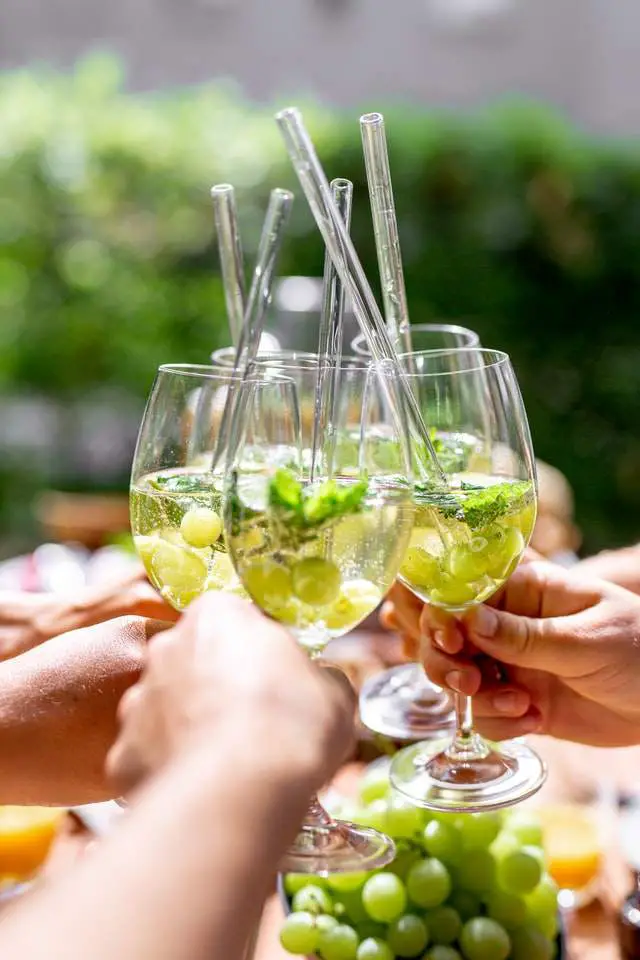
Limburgish
- Proos
Limburgish is a member of the East Low Franconian group of the Germanic languages considered a variety of German or Dutch by many people. It is spoken by around 1.6 million people in the Netherlands and Belgium.
Lingala
- Monisá
Lingala is a Bantu language spoken throughout the northwestern part of the Democratic Republic of the Congo and a large part of the Republic of the Congo by over 70 million people.
Lithuanian
- į sveikatą
— is the word for cheers in Lithuanian, meaning to your health, and pronounced (Ee sweh-ka-ta)
Lithuanian (lietuvių kalba) is an Eastern Baltic language spoken in the Baltic region as the official language of Lithuania. It is also one of the official languages of the European Union spoken by just under 3 million native speakers. The language is one of the oldest in the world.
Luxembourgish
- Prost
— pronounced (prohst)
Luxembourgish is a West Germanic language that is spoken mainly in Luxembourg. About 390,000 people speak Luxembourgish worldwide.
Luganda
- sawa (sah wah)
Luganda, a Bantu language, is an official language of Uganda along with English and Swahili. It is spoken primarily in Kampala, but may be understood in much of the country and in the African Great Lakes region.
Macedonian
- На здравје
(Na zdra-vye)
Macedonian, the official language of the Republic of North Macedonia, is a south Slavic language spoken as a first language by 2 million people.
Malagasy
- Mirary fahasalamana e
Malagasy is the national language of Madagascar belonging to the Austronesian Malayo-Polynesia family of languages spoken by 25 million people.
Malay
- Sihat selalu
— is the Malay word for cheers, pronounced (Se-at say-la-lu) - Minum
Malay (Bahasa Melayu) is an Austronesian language spoken as the sole official language of Malaysia and Brunei. It is also heard in Indonesia, Singapore, and Thailand at a total of 250 – 300 million speakers.
Malayalam
- ചിയേഴ്സ്
— (cheeyerus) is the word for cheers in Malayalam
Malayalam (മലയാളം) belongs to the Dravidian language family, spoken mostly in the Southern Indian states of Kerala and Lakshadweep. Around 36 million people use this language, which is one of the 22 official languages of India.
Maltese
- Evviva
— is how you say cheers in Maltese, pronounced A-vee-va - Ċirs
Maltese, a language of central Semitic origin written in the Latin script, is the national language of Malta. It is spoken by around 420,000 people on the Mediterranean islands of Malta, Gozo and Comino. The Maltese language developed from Sicilian Arabic, Over the centuries, it has incorporated many words derived from English, Italian and French.
Māori
- Kia Ora
— cheers in Māori
Pronounced: (Key-a or-a). Always roll your r’s when enunciating Māori words - Mauri ora
Māori is an Eastern Polynesian language spoken by the Māori people, the indigenous population of New Zealand. it has also gained recognition as one of New Zealand’s official languages.
Marathi
- आयुरारोग्य लाभो (āyurārogya labho)
- प्रकृती ठीक असो (prakruti thik aso)
Marathi is an Indo-Aryan language spoken by around 83.1 million Marathi people of Maharashtra, India. It is the official language and co-official language in the Maharashtra and Goa states of Western India, respectively, and is one of the 22 scheduled languages of India.
Marshallese
- Cheers
— is the Marshallese word for cheers
Marshallese, also known as Ebon, is a Micronesian language spoken in the Marshall Islands by about 44,000 people. It is an official language of the Marshall Islands, along with English, and is used as the language of instruction in most primary schools.
Mongolian
- Эрүүл мэндийн төлөө (Erüül mehdiin tölöö)
— the word for cheers in Mongolian (ErUHl mehdiin toloo) - Tulgatsgaaya (tul-gats-gAH-ya)
Mongolian is the official language of Mongolia and both the most widely-spoken and best-known member of the Mongolic language family. It is an Altaic language spoken by approximately 5 million people in Mongolia, China, Afghanistan and Russia.
Moroccan Arabic
- بالصحة besseha
Moroccan Arabic, also known as Darija, is a form of vernacular Arabic spoken in Morocco. It is part of the Maghrebi Arabic dialect continuum, with over 30 million native speakers.
Nahuatl
- Ma ixpāntzinco
Nahuatl is a group of languages of the Uto-Aztecan language family. It was the language of the Aztecs and the Toltecs. Variations of Nahuatl are spoken by around 1.7 million Nahua people of Central Mexico and the USA and Nahuatl remains the most widely-spoken group of Native American languages in North America.
Navajo
- Ahóá
— is the Navajo word for cheers
Navajo is an American Indian language of the Athabascan family, spoken by around 170, 000 Navajo people in the Southwestern United States regions of Arizona, New Mexico, Utah, and Colorado.
Ndebele
- Impilo enhle
Ndebele, an African language of the Nguni group of Bantu languages, is spoken by around 5 million Northern Ndebele people of Zimbabwe.
Nepali
- शुभ कामना
— pronounced as (subhakamana) is the Nepali word for cheers
Nepali (नेपाली), is an Indo-Aryan language of the sub-branch of Eastern Pahari written in Devanagari script It is the sole official language of Nepal and one of the 22 scheduled languages of India. While most Nepalese people speak at least some Nepali, there are more than 100 different languages and dialects spoken in Nepal.
Neapolitan
Cheers in Neapolitan
- salut vost
Neapolitan is a Romance language of the Italo-Dalmatian group spoken across much of southern Italy by 6 million people. It is related to but generally not mutually intelligible with Italian.
Northern Sotho / Sepedi
- Bophelo bjo bobotse
Northern Sotho is a Bantu language spoken primarily in South Africa, where it is one of the 11 official languages. It is spoken by about 4.2 million people in the South African provinces of Gauteng, Limpopo and Mpumalanga.
Norwegian
The word for cheers in Norwegian:
- Skål
— pronounced (Skawl)
Norwegian (norsk) is a Germanic language derived from Old Norse spoken primarily in Norway by over 5 million people where it is the official language.
Odia
- ଖୁଶି ରେ ରୁହନ୍ତ
— cheers in another language, pronounced (khuśi re ruhantu)
Odia is an Indo-Aryan language spoken in the Indian state of Odisha where it is the official language.
Oromo
- Injifannii
- Fayyaa keenyaaf
Oromo is a Cushitic language spoken by about 30 million people in Ethiopia, Kenya, Somalia and Egypt. It is the third largest language in Africa.
Papiamento
Cheers in Papiamento:
- Salud
— pronounced (sa-lood) - Bon salud
Papiamento is a Portuguese-based creole language spoken in the Dutch Caribbean by less than 500,00 native speakers. It is the most-widely spoken language on the Caribbean ABC islands, having official status in Aruba, Bonaire, and Curaçao.
Pashto
- ښه صحت ولری
— means cheers in Pashto, (kha sehat walary)
Pashto is an Eastern Iranian language in the Indo-European family spoken in Afghanistan, Pakistan and Iran. It is an official language of Afghanistan along with Dari.
Polish
Say the word cheers in Polish:
- Na zdrowie
— you pronounce this as (Naz-droh-vee-ay), as a toast to your health
Polish (polski) is a West Slavic language spoken by about 45 million people. Said to be one of the hardest languages to learn, it is the official language of Poland. It is understood and can be used for communication in the western parts of Ukraine, Belarus and Lithuania.
Portuguese
- Saúde
— the Portuguese word for cheers. The pronunciation is (Sa-OOh-de) - Viva
- Tchim-tchim
Portuguese (português) is a Romance language spoken as the official language of Portugal and Brazil. It is also the official language of Cape Verde, Guinea-Bissau, São Tomé e Principe, Angola, Mozambique, and the co-official language of East Timor, and Macau. There are around 200 million native Portuguese speakers.
Punjabi
- ਸ਼ੁਭਕਾਮਨਾਵਾਂ Śubhakāmanāvāṁ
— the Punjabi word for cheers. - wah wah
Punjabi is an Indo-Aryan language with more than 130 million native speakers in the Indian subcontinent and around the world. It is the 10th most spoken language in the world.
Romanian
- Noroc
— (No-roak) is the Romanian expression for cheers - Sanatate (Sahn-atate)
Romanian (limba română) is a Balkan Romance language spoken by approximately 24–26 million people as a native language, primarily in Romania and Moldova, and by another 4 million people as a second language. Although it descended from Vulgar Latin, Romanian was influenced by Slavic and Greek languages in the Middle Ages. It is an official and national language of both Romania and Moldova.
Russian
- Будем здоровы
— the Russian word for cheers, which is pronounced like (boo-dem zdo-ro-vi-eh).
meaning, let’s stay healthy - На здоровье
— (Nahz-drovia)
Russian is an East Slavic language spoken by 300+ million people worldwide. It is is an official language in the Russian Federation, Belarus, Kazakhstan and Kyrgyzstan, and many other people in Central Asia, the Baltic states, the Caucasus, and Eastern Europe know it as a second language. Commonly written in Cyrillic, it is the 8th most widely spoken language in the world.
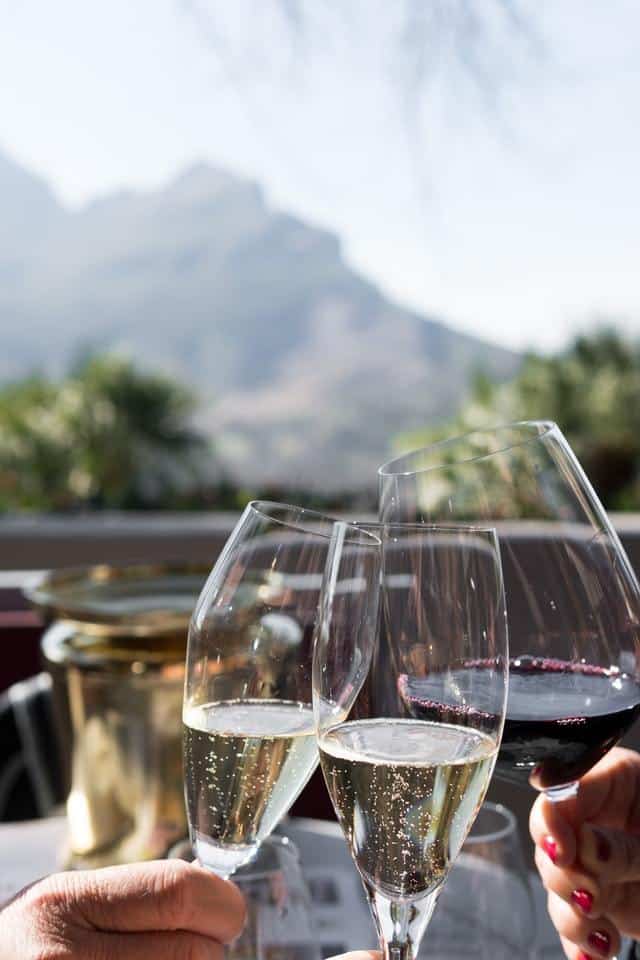
Continue reading to learn how to say cheers in many languages…
Samoan
- Manuia
— a commonly used word for cheers in Samoan
Samoan is the official language spoken in the Samoan Islands, which is made up of the Independent State of Samoa and the American Samoa. The language is the most spoken of the Polynesian language family with a total of 510,000 speakers worldwide.
Scottish Gaelic
- Slàinte
- Slàinte mhath
Scots Gaelic is a Goidelic language of the Celtic and Indo-European language family, native to the Gaels of Scotland. As a Goidelic language, Scottish Gaelic, like Modern Irish and Manx, developed out of Middle Irish.
Serbian
- živeli
— Живели (ZHEE-vi-lee), meaning let’s live long - Živeo
— Живео (Ze-rho)
Serbian is a South Slavic language spoken mainly in Serbia, Bosnia and Herzegovina, Montenegro, Croatia and Macedonia by about 9 million people. Serbian is the official and main language of Serbia and Montenegro.
Sesotho
- Nqa
Sesotho (Sotho) is a Southern Bantu language of the Sotho-Tswana group, spoken primarily by the Basotho in Lesotho, where it is the national and official language, South Africa, where it is one of the 11 official languages and in Zimbabwe where it is one of 16 official languages.
Shanghainese Wu
- 干杯干杯 (Gubeh gubeh)
Shanghainese, part of the Sino-Tibetan language family, is a variety of Wu Chinese spoken in the central districts of the City of Shanghai and its surrounding areas by 10 – 14 million speakers.
Shona
- Munovhara nguvai
Shona, one of the most widely spoken Bantu languages, is the main language in Zimbabwe.
Sindhi
- خوش رهو
Sindhi, an Indo-Aryan language, is the official language of the Pakistani province of Sindh and spoken by over 25 million Sindhi people.
Sinhala
- වාසනාවන් (vāsatāvan)
- ඡය වේවා (jaya vevā)
Sinhala is an Indo-Aryan language spoken by approximately 16 million Sinhalese people in Sri Lanka and is one of two official languages of Sri Lanka.
Slovak
- Na zdravie
— translates to cheers in Slovak, pronounced (Naz-drah-vee-ay)
Slovak, the official language of Slovakia, is a West Slavic language where it is spoken by approximately 5.6 million people.
Slovenian
- Na zdravje
— is the Slovenian word for cheers, pronounced (Naz-drah-vee) - Živeli
Slovenian, an Indo-European language of the South Slavic language branch is the official and national language of Slovenia spoken by less than 3 million people.
Somali
- Guul
- Guul wanaagsan
Somali, an Afro-Asiatic language spoken by over 16 million people, is an official language of Somalia, a national language in Djibouti, and a working language in the Somali Region of Ethiopia.
Spanish
How to say cheers in Spanish
- Salud
— a general term to use when you you want to say cheers in Spanish.
pronounced (Sah-lood) - Chin-chin
— an informal way to say cheers in many languages including Spanish is by saying chin-chin
Spanish is the second most widely used language in the world natively spoken by more than 437 million people including Spain, the Spanish Islands, most of Central and South America, Mexico and the USA. There are over 21 countries in the world that have Spanish as their official language. It is a Romance language that originated in the Iberian Peninsula.
Did you know:
In Costa Rica, where Spanish is the official language, Pura vida is the common way of saying cheers.
Sundanese
- Mugi sing séhat
Sundanese is a Malayo-Polynesian language spoken by about 39 million people mainly in western Java in Indonesia. There are also speakers in Banten, Jakarta, parts of western Central Java and southern Lampung. It is the third most-spoken language in Indonesia.
Swahili
- Maisha marefu
— is the Swahili word for cheers - Afya
- Vifijo
Swahili is a Bantu languages spoken by the Swahili communities in Kenya, Tanzania, Uganda, Rwanda, Burundi, Mozambique and the Democratic Republic of Congo.
Swati
- Imphilo lenhle
Swati is a Bantu language of the Nguni group spoken in Eswatini and South Africa by the Swazi people. It is the official language of Swaziland (along with English) and since 1994 one of the nine indigenous languages to enjoy official recognition in South Africa. The number of speakers is estimated to be in the region of 2.4 million.
Swedish
- Skål
— the Swedish word for cheers.
pronounced as (Skawl).
Swedish is a North Germanic language, closely related to Norwegian and Danish spoken by around 10 million people. A descendant of Old Norse, it is the national language of Sweden and the official language of the Åland Islands.
Swiss German
- Proscht
— pronounced as (pro-skt)
Swiss German is the collective name for the great variety of Upper German dialects spoken in Switzerland, Liechtenstein, in the Austrian province of Vorarlberg, in parts of Baden-Württemberg in Germany and Alsace in France.
Tagalog Filipino
- Mabuhay
— pronounced as (mah-boo-hay) as a toast to long life
Tagalog is an Austronesian language spoken as a first language by a quarter of the population of the Philippines and as a second language by the majority. Its standardized form, officially named Filipino, is the national language of the Philippines, and is one of two official languages alongside English.
Tahitian
- Manuia
— is the Tahitian word for cheers
Tahitian belongs to the Eastern Polynesian language group, spoken mainly on the Society Islands in French Polynesia and Bora Bora.
Taiwanese Hokkien
- 乾杯 Kan Poe
- 呼乾啦 (ho ta là)
Taiwanese Hokkien is the Hokkien dialect of Min Nan as spoken by about 70 percent of the population of Taiwan.
Tajik
- салом (salom)
Tajik is the main language of Tajikistan, closely related to Farsi and Kurdish. Since the late 1930s, it is written using a variant of the Cyrillic script.
Tamil
- நல் ஆரோக்கியம் பெருக
— Nallārōkkiyam peruka
the general phrase for cheers in Tamil
Tamil is a Dravidian language spoken in southern India, Sri Lanka and Singapore by about 67.5 million people. It can also be heard in Mauritius and Malaysia.
Tarifit
- في صحتك Fi sihtik
Tarifit is spoken by 8 million speakers in Arrif (Northern Africa) and Europe.
Tatar
- Isänlektä
Tatar (татарча), the national language of the Tatars, is a Turkic language spoken mainly in the Russian republic of Tatarstan as well as Siberia by about 7 million people in Central Asia. It refers to the Volga-Kipchak Kipchak subgroup of the Turkic group of languages.
Telugu
- శుభ ఆరోగ్యం (shubha aaroagyaṅ)
— is the Telugu word meaning cheers
Telugu is a Dravidian language spoken in the Indian states of Andhra Pradesh, Telangana and the union territories of Puducherry by 75 million Telugu people.
Thai
How to express cheers in Thai:
- ไชโย Chai yo
— is the Thai noun for cheers
pronounced as (chay yo) - ไชโย Choc dee
— another Thai word for cheers, pronounced (Chok-dee)
Thai ภาษาไทย, the sole official and national language of Thailand, spoken by 50 million people, belongs to the Tai group of the Kra–Dai language family of Southeast Asia.
Tibetan
- གཟུགས་པོ་བདེ་ཐང་།
— (suk-bo de-thang) This is the Tibetan word for cheers
Tibetan is an official language of the Tibet Autonomous Region of the People’s Republic of China. The Tibetic languages are a cluster of Tibeto-Burman languages descended from Old Tibetan, spoken across a wide area of eastern Central Asia bordering the Indian subcontinent, including the Tibetan Plateau and the Himalayas.
Tsalagi Cherokee
- Adagalisdodi
Cherokee (Tsalagi) belongs to the Iroquoian language family. The Cherokee language is unique among Native American languages in that it is both a written and spoken language.
Tswana
- Pholo e ntle
Tswana is a Bantu language spoken by about 4.4 million people in Bostwana, where it is the national and majority language, Namibia, Zimbabwe and South Africa. The majority of speakers, about 3.6 million, live in South Africa, where the language is officially recognised.
Turkish
- Şerefe
— the Turkish word for cheers, pronounced like (Sher-ef-eh). - Sağlığına
Turkish is a Turkic language believed to be of the Altaic language family spoken mainly in Turkey, Northern Cyprus, Cyprus and other countries of the former Ottoman Empire by about 88 million people.
Ukrainian
- Na zdorov’ya
— the Ukranian word for cheers, pronounced as (Nahz-drovia)
meaning: to a long life. - будьмо (Bud’mo)
— another Ukranian word for cheers, pronounced (Bood-mo)
Ukrainian is an Eastern Slavic language spoken mainly in Ukraine by about 51 million people.
Urdu
- اچھی صہت کۓ لیۓ
— (ache sehat kay leyae) means cheers in Urdu
Urdu is the official national language and lingua franca of Pakistan. It is a member of the Indo-Aryan group within the Indo-European family of languages and is mutually intelligible with Hindi.
Uzbek
- Oldik
- Sog’liq uchun
Uzbek is a Turkic language that is the official national language of Uzbekistan spoken by around 27 million people.
Vietnamese
How to express cheers in Vietnamese:
- Một hai ba yo
— (Moat hi bah yo) is the pronunciation - Chúc sức khoẻ
— (chook-sa-koi-ah) - Dô
— pronounced (jou) - Vô
— pronounced (dzo)
Vietnamese is an Austroasiatic language spoken mainly in Vietnam, where it is the national and official language, by about 82 million people.
Welsh
- Iechyd da
— how to say cheers in Welsh, pronounced (Yeh-chid dah)
Welsh is a Brittonic language of the Celtic language family spoken natively in Wales, and by some in England.
Xhosa
- Impilo
— is the Xhosa word for cheers
Xhosa is a Nguni Bantu language with click consonants and is one of the official languages of South Africa. It is spoken as a first language by approximately 8.2 million people and by another 11 million as a second language in South Africa, mostly in Eastern Cape Province.
Yiddish
- צום געזונט Zei gesund
— pronounced (zay GAH-zunt) - לחיים (L’chaim)
— is the Yiddish word for cheers, meaning to life, pronounced (leh HAI-em)
Yiddish is the historical language of the Ashkenazi Jews originating during the 9th century in Central Europe. Belonging to the Indo-European language family, it is spoken by 1.5 million people.
Yoruba
- Ayọ ni o
- Kara o le
Yoruba is a pluricentric language spoken in West Africa with the number of speakers estimated between 30 and 40 million. It is a language spoken principally in Nigeria and Benin, with communities in Sierra Leone, Liberia, other parts of Africa.
Zulu
- Oogy wawa
— is the word for cheers in Zulu, pronounced (oogee-wawa) - Impilontle
- Akubekuhle
Zulu is a member of the Bantu/Nguni family of languages. It is one of the official languages of South Africa spoken by about 10 million people mainly in Zululand and northern Natal in South Africa and also in Botswana, Lesotho, Malawi, Mozambique and Eswatini.
That’s cheers in all the languages! Before you go, check out:
The word for CHEERS in Other Languages – BONUS
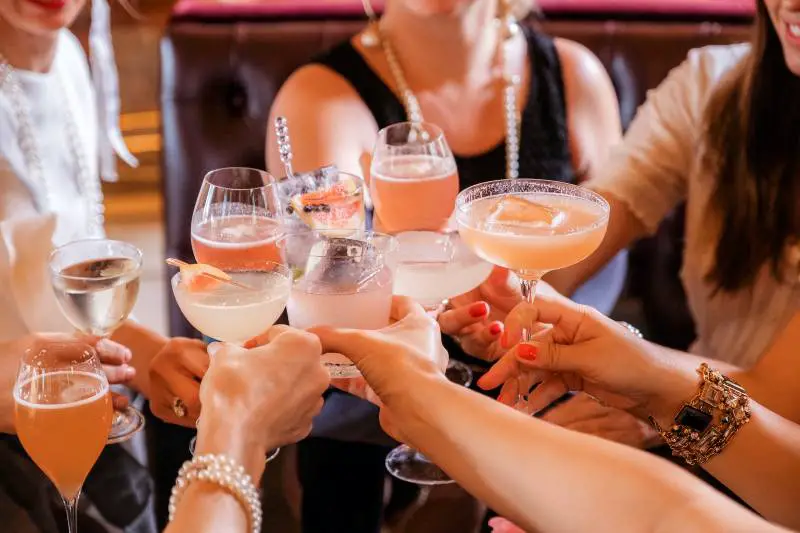
American Sign Language (ASL)
How to say cheers in American Sign Language:
- Simply raise your glass
American Sign Language is a complete, natural language that has the same linguistic properties as spoken languages, with grammar that differs from English, expressed by movements of the hands and face.
British Sign Language (BSL)
How to say cheers in British Sign Language:
- Simply raise your glass
British Sign Language is a sign language used in the United Kingdom as the first or preferred language of some deaf people. The language makes use of space and involves movement of the hands, body, face, and head.
Dothraki
- hajas
— How to say cheers in Dothraki
Dothraki is a constructed fictional language spoken by the Dothraki, a nomadic people in the fictional world of George Martin’s fantasy novel series A Song of Ice and Fire and its television adaptation the Game of Thrones.
Elvish Sindarin
- Almien
— How to say cheers in Elvish
Elvish Sindarin is one of the fictional languages created by J. R. R. Tolkien for use in his fantasy stories set in Arda, primarily in Middle-earth. Sindarin is one of the many languages spoken by the Elves, called the Eledhrim or Edhellim in Sindarin.
Espetanto
- Je via sano
— (YEH VEE-ah SAH-no) - Toston
— (Tóston)
Esperanto is an artificially constructed language and belongs to no linguistic family, with most of its vocabulary coming from the Romance languages. This phonetic language is the most widely spoken constructed international auxiliary language.
Klingon
- IwlIj jachjaj
— this is the word for cheers in Klingon, pronounced (Ewll-widge-jadge-jadge)
translation: May your blood scream
Klingon is a language that was made for the Klingons in the Star Trek movie. It is a constructed language, and not one that developed naturally. Only a few people can speak the Klingon language well enough to talk in it.
Minionese
- Kampai
Minionese spoken by the minions of the Despicable Me movie series appears to be a polyglot language which borrows words and grammatical rules from many different languages.
Na’vi
- Awnga niväk ko
— cheers in Na’vi
Na’vi is a constructed language, created for the fictional Na’vi, the humanoid inhabitants of the moon Pandora in the 2009 film Avatar.
Quenya
- Almien
— To good fortune
Quenya is one of the fictional languages devised by J. R. R. Tolkien and used by the immortal Elves in the Lord of the Rings and as inspiration for countless travel quotes. Tolkien began devising the language around 1910 and restructured the grammar several times until Quenya reached its final state. The vocabulary remained relatively stable throughout the creation process.
LEARN THESE WORDS IN OTHER LANGUAGES TOO!
I LOVE YOU: My LOVE in different languages
BIRTHDAY: HAPPY BIRTHDAY in different languages
THANK YOU: thanks in every language of the world
HELLO: hi in every language of the world
BEAUTIFUL: beautiful in different languages
GOOD MORNING: morning in different languages
NIGHT: good night in different languages
GOOD BYE: Bye in different languages
FRIEND: friends in different languages
Aaaaaaaand now you know how to say cheers in every language of the world! To wish each other well and an expression of joy for being together.
OVER TO YOU GUYS!
What is the word for cheers in your language? Extra points if you can speak several languages… Let me know in the comments.
If you see an error here or if your language is missing from this list, please comment and let me know!
Cheers to a long and happy life <3
Rai
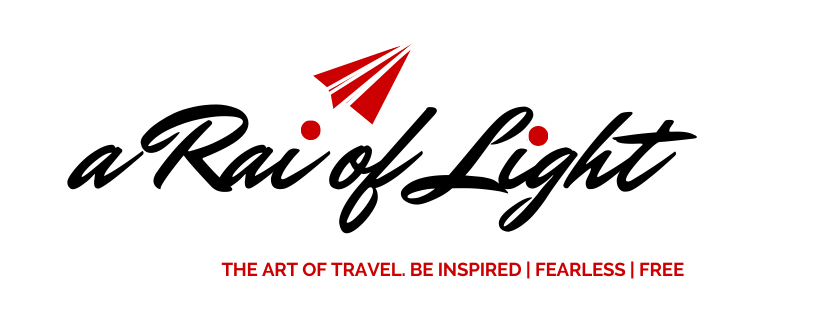



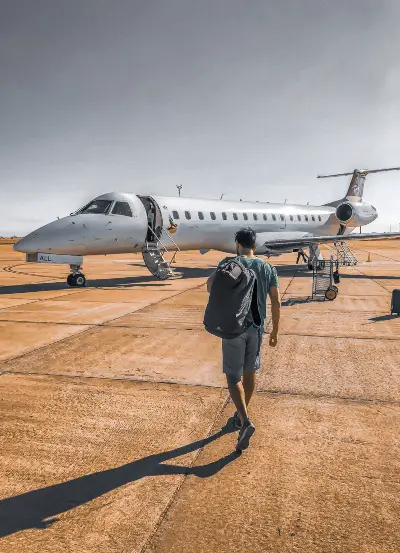 New Here?
New Here? 







